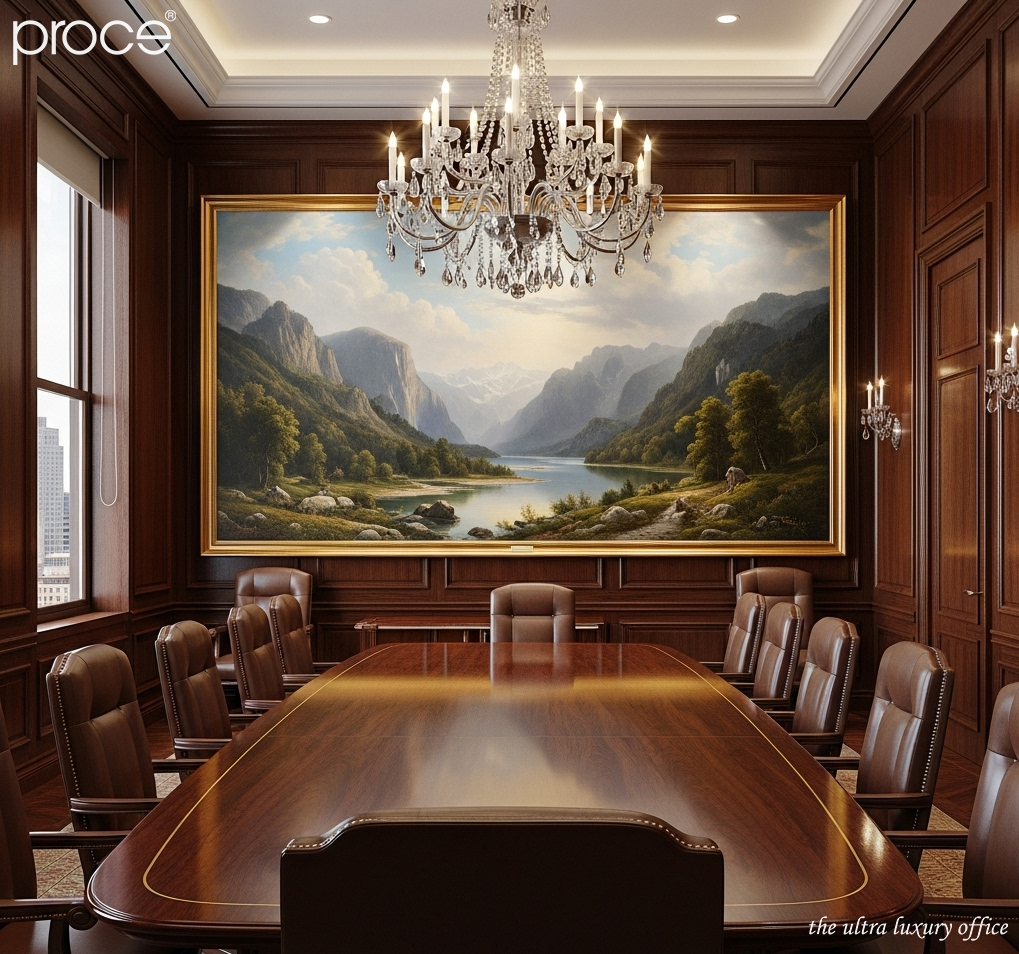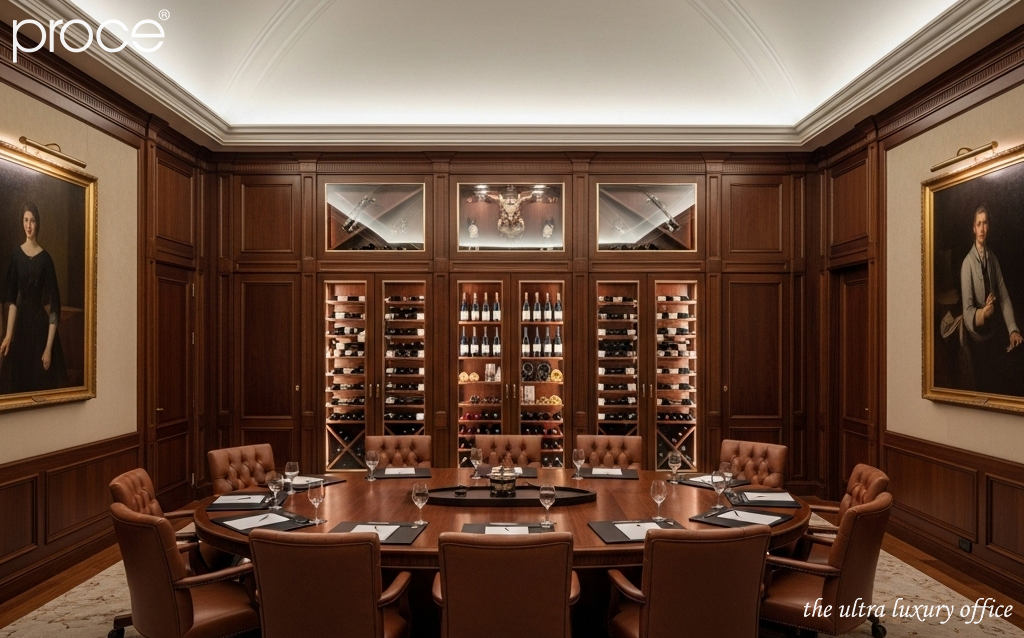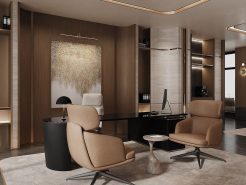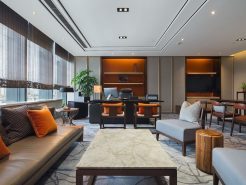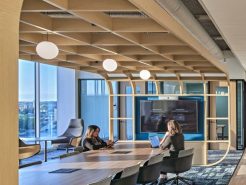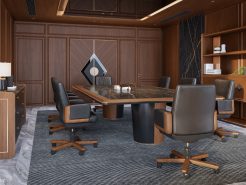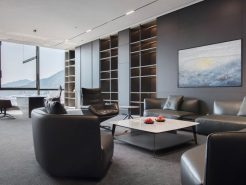I used to think that reviewing the interior design of a meeting room was just a matter of choosing which chair was comfortable to sit on and which table looked nice. But then I found myself sitting in the middle of three perspective drawings, eight conflicting opinions and a seemingly simple question: “What is this conference room for?” Behind each choice, from the color of the wood, the sound of the chair turning to the light shining on the face of the person opposite. There is an entire operating philosophy. This is not a story about interior design. This is a story about how a quiet space guides big decisions. And I want to tell you about a meeting that was not in the minutes through the following article!
1. First Design – Beautiful but Unusable
I still remember very clearly the moment I first saw the perspective design of the new conference room. I must say that the first impression was really strong. A modern space appeared before my eyes with cold tones and the main color tones were gray, black and white. Everything was carefully taken care of from the use of glass and metal to the lighting arrangement. Creating a very neat and agency-like overall look as we originally intended. When I looked at that design, I was really impressed. I thought: “It’s beautiful. It’s exactly the spirit we want.”
But that impression quickly changed when I experienced the space directly. The metal-legged chair looked luxurious but was too hard. Sitting for less than 15 minutes made my back ache, let alone meetings that lasted for hours? The glass table was very shiny, until we tried projecting slides onto the screen. The light reflected everywhere, causing glare and loss of concentration. Then when we started talking, I realized that the room had quite a clear echo. Each sentence echoed and reverberated, creating a feeling of discomfort and lack of concentration. At that moment, I understood that a design that is only beautiful on paper, but not suitable for use in reality, is no longer a design. It is just an image. Design, for me, always has to start with people and real-life experiences. (Transforming the meeting room into a contemporary art space).
2. Meeting room interior design – Focus on functionality, people-centered
I put the problem back to the design team
After seeing the first design, I had to admit that although it was aesthetically pleasing, it was completely unusable. I knew I needed to “reset” the team’s thinking. One morning early in the week, I invited the design team to a meeting and said frankly: “Help me design a meeting room that is focused on the user. Not just creating pretty pictures for the magazine.”
Questions started running through my head
I started asking seemingly simple but actually core questions. Who will use this space? Executives, HR, partners or customers? Each group has very different needs and behaviors. What will we use this room for? Not just for quick meetings, but also for strategy meetings, contract signings, even press conferences with the media.
How long does an average meeting last? Some are as short as 15 minutes, while others can take up to three hours. And during that time, the space needs to support maximum concentration and efficiency. So is soundproofing necessary? Is there a need for professional lighting, cameras, and sound systems?
At that point, what I needed was no longer a beautiful design. But a reasonable design. When people are at the center of every design thought. Then every decision after that will really go in the right direction and create real value.
Suggested core design criteria for meeting room
From the problem I posed, the group began to go into the most important part: the design criteria. Not from the personal taste of the architect. But from the very real needs of the user. I made it clear: the meeting chair cannot be a decoration. It must be soft, support the body well, upholstered in fabric or leather. Have armrests so that the person sitting feels comfortable throughout the meeting. But the design must be fixed, do not use swivel chairs. Because constant movement can easily cause distraction and reduce the concentration of the whole room.
The conference table also needs to be designed with high practicality. The table top should use natural wood. Because this is a material that both ensures luxury and has a matte surface to limit light reflection. Helps to concentrate better when working. The table also needs to have an integrated electrical system and hidden cables underneath. So that people can plug in laptops, present, and record without tangling wires. Such seemingly small details. But are the key factor that determines the overall experience of the space.
Ceiling height also needs to be carefully calculated
The ceiling height should be high enough to create an airy feeling. But not too high to make the space feel cold and disconnected. I also emphasize the requirement for soundproofing. The sound inside must be kept absolutely sealed, not allowed to leak out. And conversely, noise from the hallway or surrounding area must not affect the meeting participants. The floor surface must be carpeted, not only to reduce echoes. But also to create a soft, private and professional feeling for the entire space.
The subtle colors of the space
I chose a neutral color palette such as stone gray, ivory white, wood brown… to create a serious, neat space but still maintain warmth and comfort. The color should not cause visual pressure. But should help the user feel comfortable. At the same time, it still exudes the solidity and power typical of a place where important decisions are made.
For me, design is not just a story of beauty. It is a subtle dialogue between space and people. A good space is not just a space to look at. It must be livable, workable and serve the purpose it is intended for. (Unboxing Proce’s 4 million-dollar meeting rooms).
3. Meeting room interior – Aesthetics associated with the brand
Revised meeting room design
In the final round of review, I realized that the design team had truly entered the stage of “absorbing” the spirit of this space. The drawing at this point was no longer simply a beautiful arrangement. It had become a comprehensive solution. Where aesthetics and functionality go hand in hand, closely linked to the corporate brand.
The main material chosen is warm, luxurious natural wood. Combined with matte black metal, it brings strength and modernity but is not too ostentatious. The back wall, where the company logo is placed, is no longer simply a decorative wall. It is made of special sound-absorbing material. It not only processes sound but also cleverly brings brand identity elements into the space in a subtle and profound way.
I was particularly impressed with the LED lighting around the conference table. When turned off, it is discreet, but when turned on for a presentation, the light gently emphasizes the central area. It creates a sense of concentration without pressure. The chairs are also custom-made, with a small logo on the back of each. Just enough to remind each participant of their identity, but not offensive to the space.
Final Test – Not to Wow, but to Listen
I have always believed that no design should be approved by emotion alone. In the final round, I personally checked every detail, leaving nothing out. I pulled out a chair and sat down. Not just to check for comfort, but to listen to the sound of the swivel and the sliding. There should be no creaking that would interrupt a serious meeting.
I entered the room at two times: morning and afternoon. To observe how the natural light poured into the space. Was the sunlight too harsh? Were there any shadows during the meeting? Then I asked for a video test call, turned on the camera, projected slides… To check each camera angle, the reflection of the table, the wall, the light. What appeared on the video screen was also part of the company’s image that could not be overlooked.
Only when I was completely sure that the space was functional, quiet, and aesthetically pleasing did I nod. And I told the team one last thing, which is what I always believed: “I don’t need a meeting room that makes people admire. I need a meeting room that makes people listen.” Because at the end of the day, design is not about impressing. It’s about creating real value, in every moment that happens inside. (5-star meeting room experience – Is it really necessary?).
Conclude
After that meeting, I realized that meeting room interior design is not just about “looking good”. It is about activating thinking, maintaining focus and conveying leadership. A sturdy table can make for a confident negotiation. A comfortable chair can keep people staying longer with ideas. And a properly designed space needs no introduction. It still speaks to the class of the business. I do not approve drawings, I approve a space that creates value. Because sometimes, quiet decisions are the foundation for noisy progress.
=====\
PROCE – TOTAL LUXURY OFFICE SOLUTION
Website: https://proce.vn/
Youtube: https://www.youtube.com/@noithatvanphonghangsang
Fanpage: https://www.facebook.com/vanphongnhapkhauProce
GG Business: https://business.google.com/dashboard/l/15115233216900975876
Linkedin: https://www.linkedin.com/company/74359718/admin/
Hotline: 090.115.6767
#phong_hop; #phong_hop_phong_chu_tich; #phong_hop_dang_cap
#phong_hop_chuan_sang; #noi_that_phong_hop; #thiet_ke_phong_hop
#phong_hop_chu_tich_cao_cap


